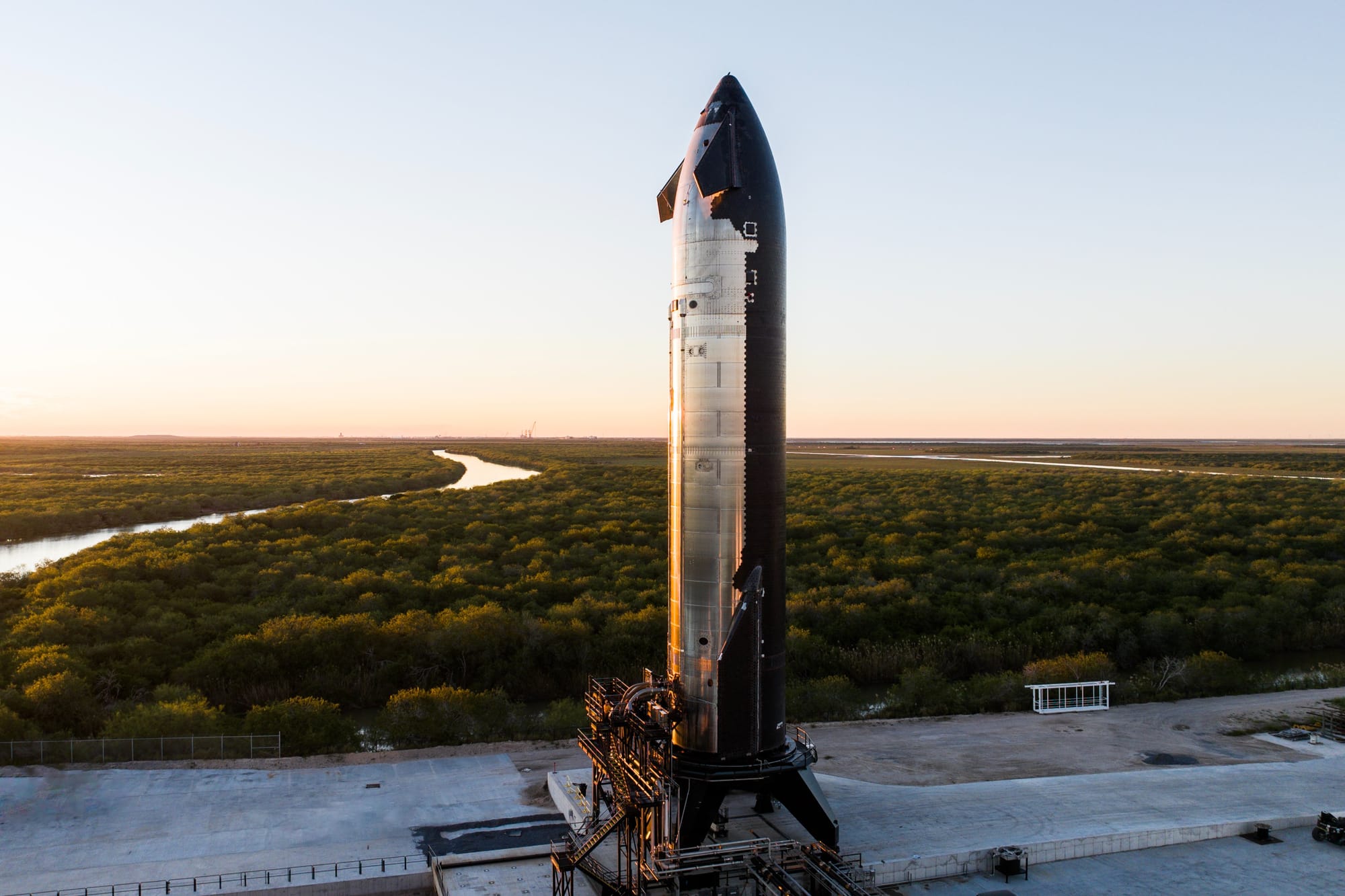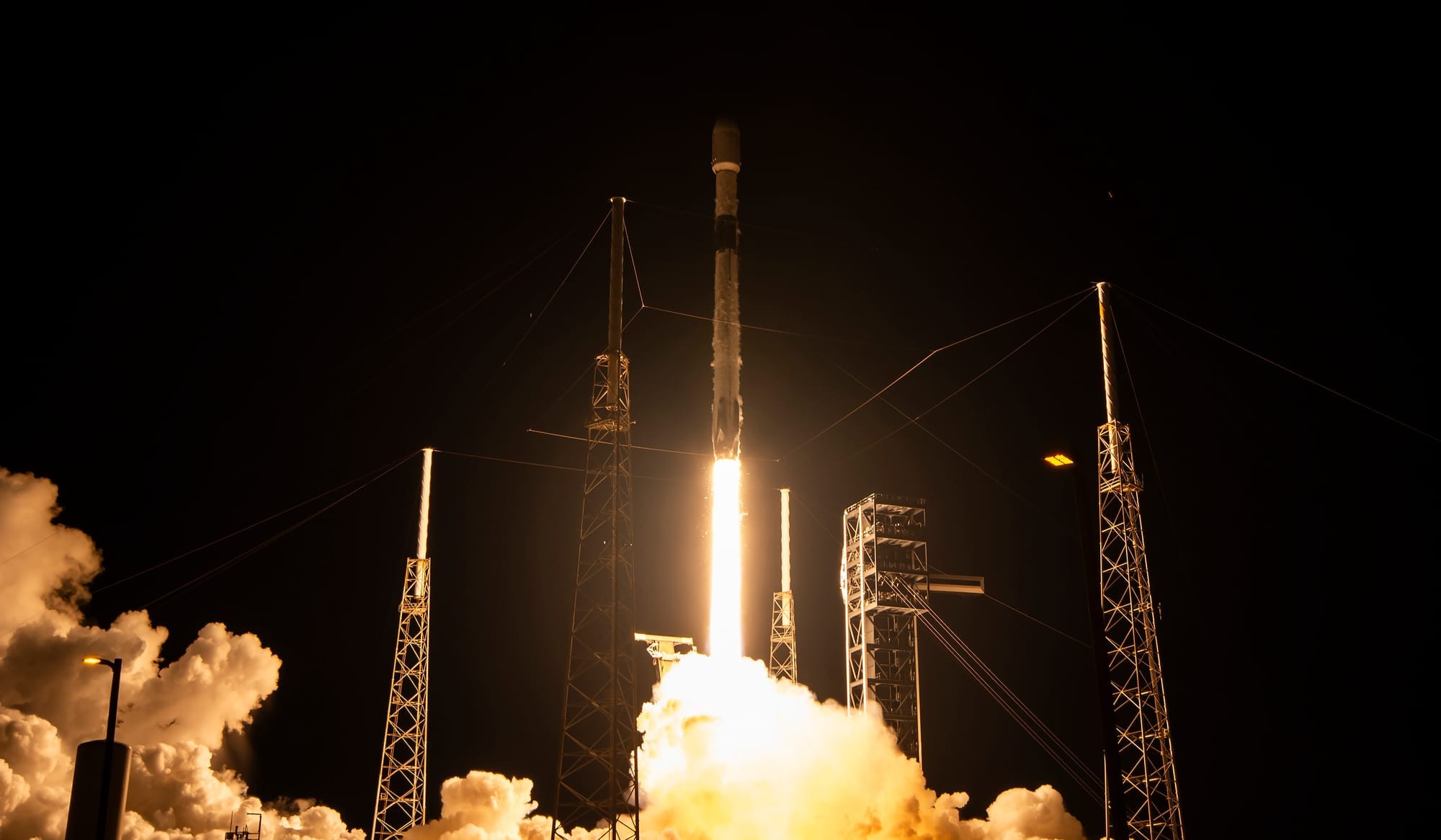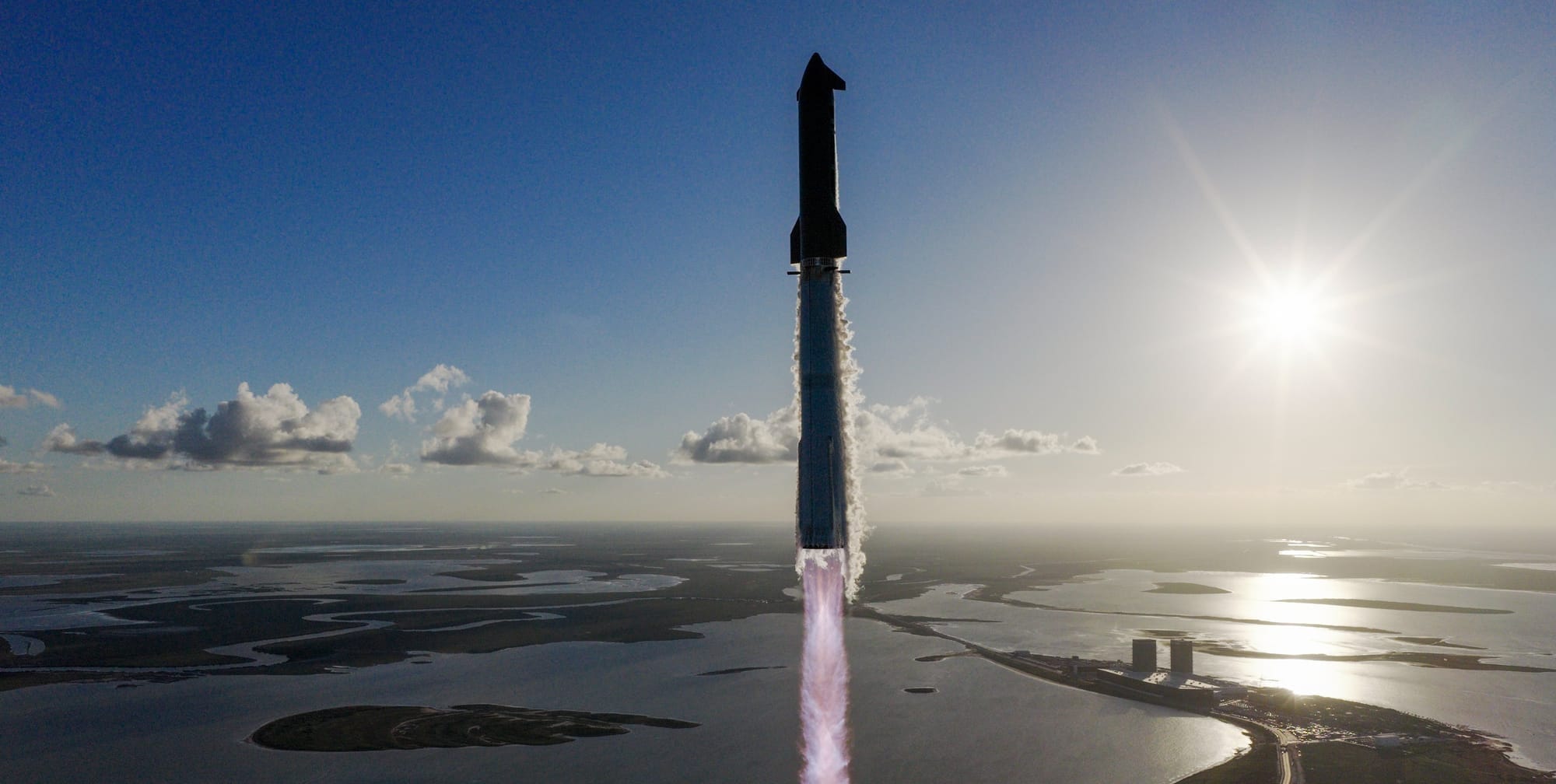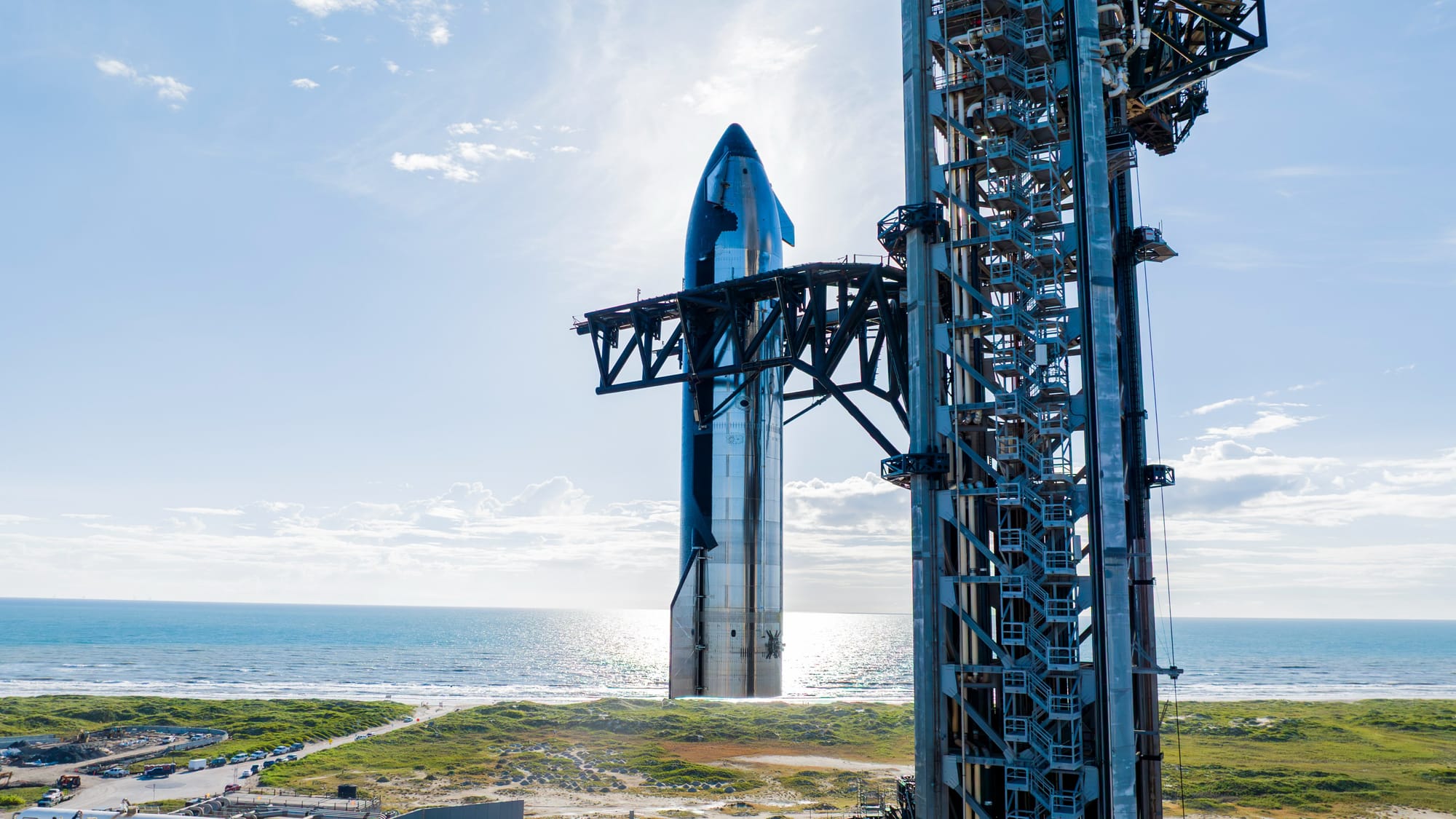Table of Contents
Just over a month and a half ago, SpaceX's in-development fully reusable Starship-Super Heavy launch vehicle performed its sixth flight test. Since that test, the company has been preparing to expand the vehicle's capabilities. Today, SpaceX released an update regarding flight seven, along with a short recap of the previous test.
Starship-Super Heavy's seventh flight test is planned to utilize Ship 33, the first 'Block 2' Starship upper-stage, and Super Heavy Booster 14 on a suborbital trajectory from Starbase to the west coast of Australia. SpaceX has not announced a launch date but regulatory filings have the test flight taking place on January 10th.
As mentioned Ship 33 is a new version of the Starship upper-stage with SpaceX listing the design changes as:
"A block of planned upgrades to the Starship upper stage will debut on this flight test, bringing major improvements to reliability and performance. The vehicle’s forward flaps have been reduced in size and shifted towards the vehicle tip and away from the heat shield, significantly reducing their exposure to reentry heating while simplifying the underlying mechanisms and protective tiling. Redesigns to the propulsion system, including a 25 percent increase in propellant volume, the vacuum jacketing of feedlines, a new fuel feedline system for the vehicle’s Raptor vacuum engines, and an improved propulsion avionics module controlling vehicle valves and reading sensors, all add additional vehicle performance and the ability to fly longer missions. The ship’s heat shield will also use the latest generation tiles and includes a backup layer to protect from missing or damaged tiles."
Various pieces of hardware for Starship upper-stage tower catches is flying on Ship 33 to thermally test the equipment. Experimental tiles are also on the Ship to test alternative thermal protection systems, such as active cooling, along with some being removed to stress test potential weak spots.
Ship 33 will also attempt to deploy Starship's first payloads with ten Starlink satellite simulators planned to be released. These payloads will be destroyed upon reentry due to the flight tests suborbital trajectory. Another in-space Raptor relight test is also planned.
Booster 14 will be attempting to perform the Starship program's second tower catch, repeating what occurred on the fifth flight test but was aborted on the sixth. Some upgrades and flown hardware will also be used on this flight test with SpaceX stating:
"The Super Heavy booster will utilize flight proven hardware for the first time, reusing a Raptor engine from the booster launched and returned on Starship’s fifth flight test. Hardware upgrades to the launch and catch tower will increase reliability for booster catch, including protections to the sensors on the tower chopsticks that were damaged at launch and resulted in the booster offshore divert on Starship’s previous flight test."
As with the previous tower catch attempts, various vehicle and tower safety criteria will need to be met along with a manual command from the mission’s flight director to allow for a catch. If the criteria is not met Booster 14 will divert offshore.
If the seventh flight test is successful, flight eight may head for orbit to allow for a tower catch of the Starship upper-stage.
What is Starship-Super Heavy?
Starship-Super Heavy is SpaceX's in-development fully reusable super heavy-lift launch vehicle and the largest rocket currently flying. SpaceX is currently aiming to have the launch vehicle deliver one-hundred and fifty tons to low Earth orbit while reused or two-hundred and fifty tons when expended, although there are rumors from SpaceX of an expendable payload capacity of three-hundred tons.
On the launch pad, Starship-Super Heavy is one-hundred and twenty-four meters tall and weighs 5,000,000 kilograms fully fuelled. The diameter of both vehicles is nine meters, excluding aerodynamic control surfaces.
What is Starship?
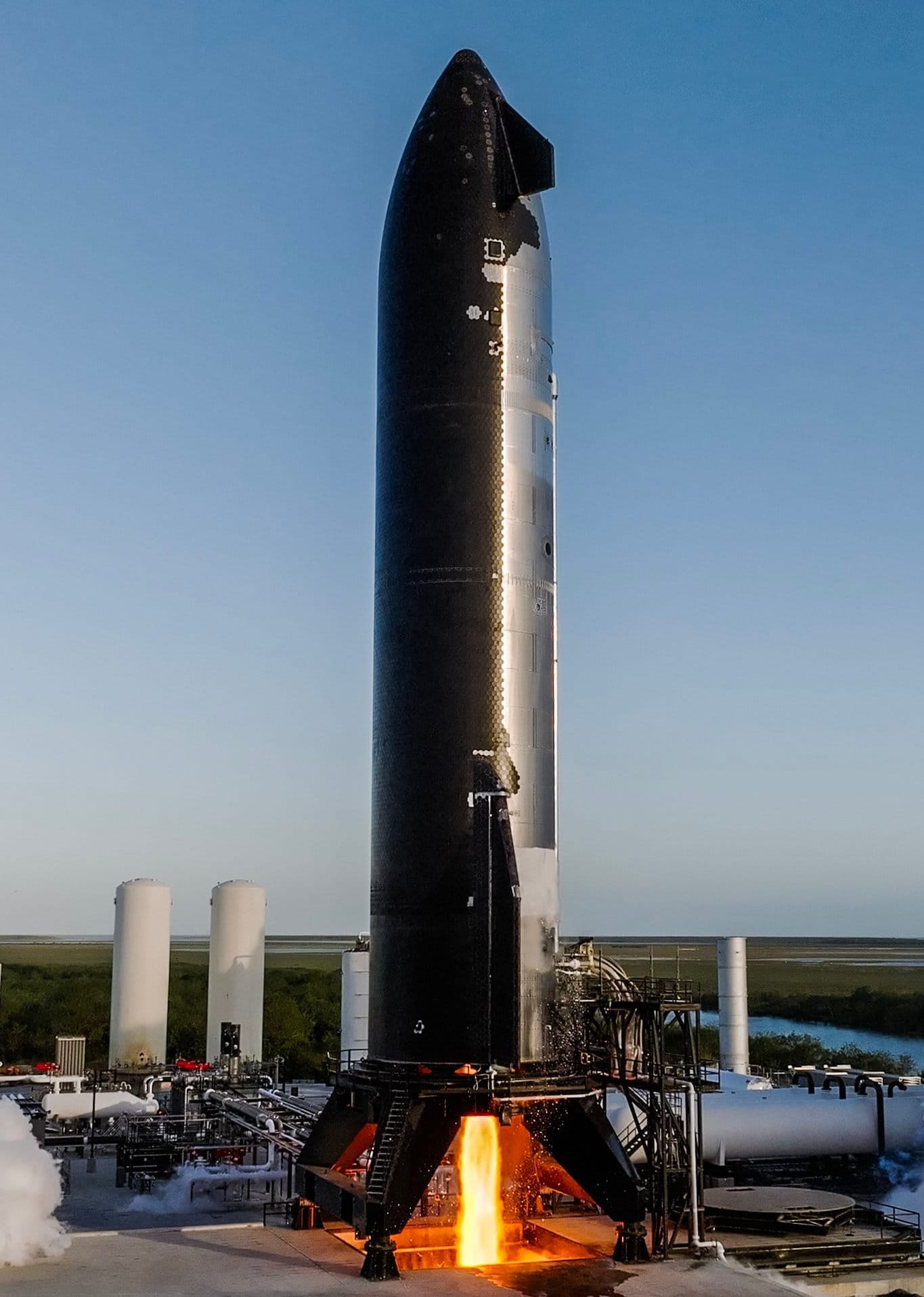
Starship is the second-stage of the Starship-Super Heavy launch vehicle and is planned to be capable of multiple missions into orbit, after a short refurbishment. The vehicle is fifty meters tall and nine meters in diameter, excluding its four aerodynamic control surfaces. Fully fuelled with liquid methane and liquid oyxgen Starship is believed to weigh 1,300,000 kilograms with an approximate weight of 100,000 kilograms unfuelled.
The Starship second-stage is powered by three sea-level Raptor engines along with three vacuum-optimized Raptor engines. These sea-level engines are believed to generate 230 tons of thrust each with the vacuum-optimized engines generating 258 tons of thrust each for a total combined 1,500 tons of thrust for Starship. The vacuum-optimized Raptors are unable to gimbal requiring the sea-level Raptors for control of the second-stage on ascent and landing.
In order to survive re-entry for reuse, Starship has several thousand thermal protection tiles on one side of the vehicle and on all four of its aerodynamic control surfaces. The four control surfaces help guide the vehicle during re-entry and prior to landing inside the atmosphere at a pre-determined location. Starship also has a series of small thrusters to control the vehicle in space before re-entry.
SpaceX is believed to be working on a few variants of Starship for use as a Moon lander, propellant tanker, space station, Mars lander, and as a crewed spacecraft.
What is Super Heavy?
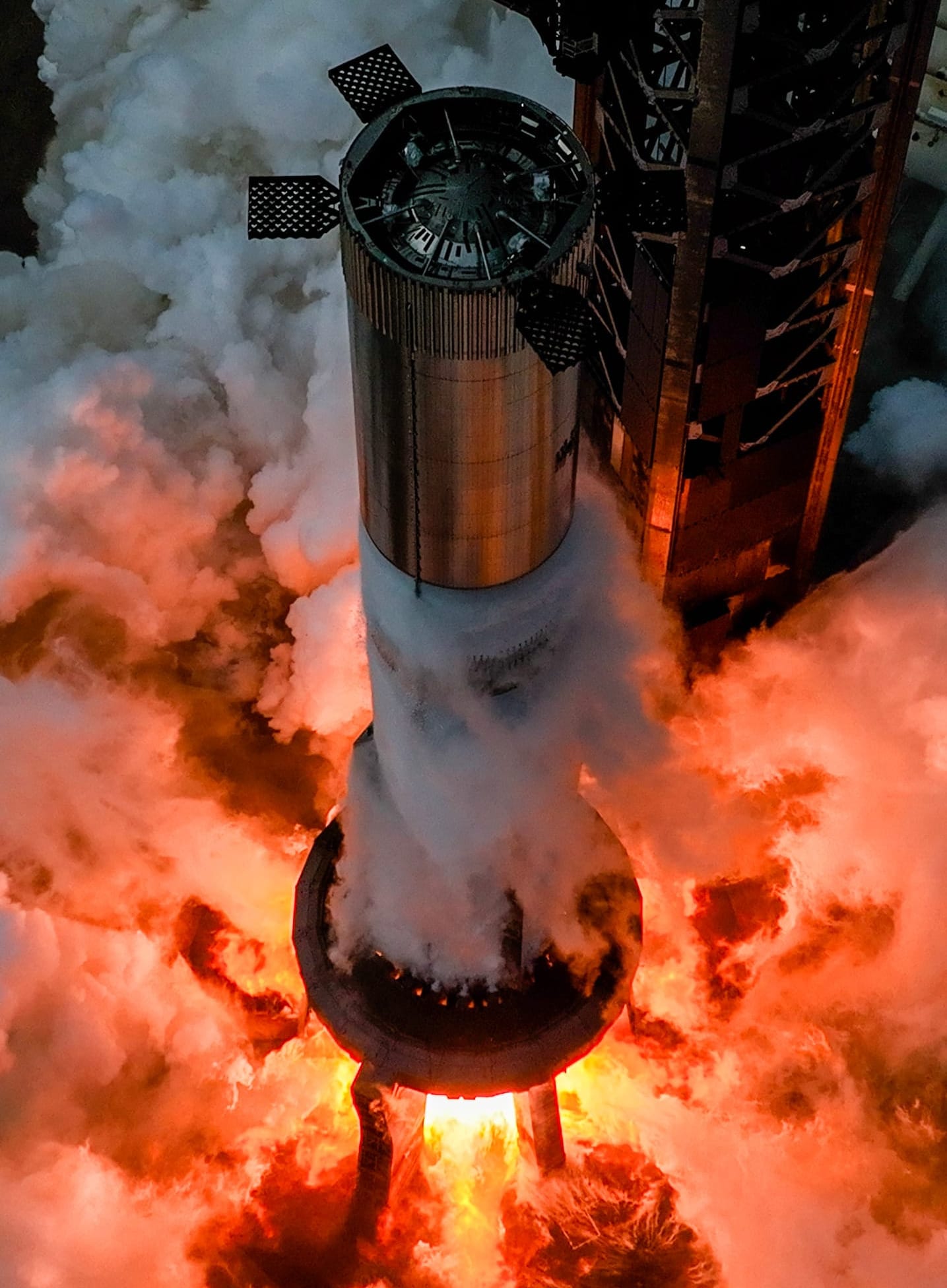
Super Heavy, also called 'the Super Heavy booster', is the first-stage of SpaceX's Starship-Super Heavy launch vehicle. The giant Super Heavy first-stage is planned to be capable of multiple flights per day with minimal refurbishments and inspections. The vehicle is seventy-one meters tall and nine meters in diameter, excluding its four grid fins and chines. Fully fuelled with liquid methane and liquid oyxgen Super Heavy is believed to weigh 3,600,000 kilograms with an approximate mass of 200,000 kilograms unfuelled.
The Super Heavy first-stage is powered by thirty-three sea-level Raptor engines generating a combined thrust of 7,590 tons, with each engine generating 230 tons of thrust. The outer twenty Raptor engines are unable to gimbal with the inner thirteen being able to for control of the first-stage.
To enable the reuse of Super Heavy, the vehicle has four large grid fins placed in the interstage to assist in guiding and controlling during descent. Super Heavy also has four chines running along the lower third of it to generate lift and assist in stabilization.
Shortly after completing the ascent, Super Heavy relights ten engines, as three were running during staging, and performs a 'boost back' burn in order to return to the launch site. After the 'boost back' burn is completed the engines shut down with Super Heavy being guided by a series of small thrusters and its grid fins. Once Super Heavy is at the correct altitude above its landing location three engines start back up for the landing burn. SpaceX currently plans to have Super Heavy land in the ocean with launch site landing attempts happening with later flights.
Super Heavy also features a hot-staging ring atop of it to allow for a faster and simpler staging process, according to SpaceX. The hot-staging ring has dozens of gaps on the sides to allow for the Raptor engine exhaust of Starship to escape.

